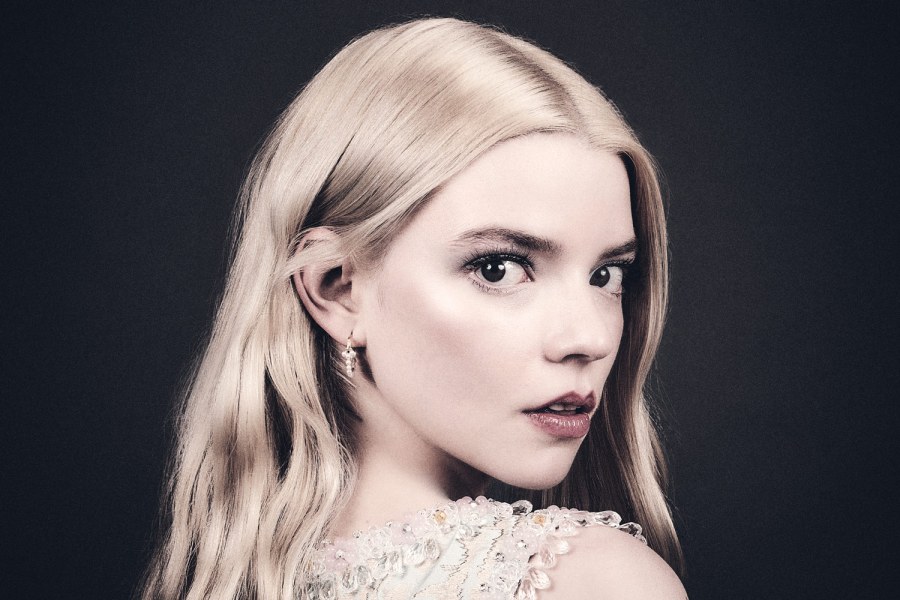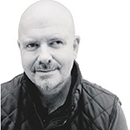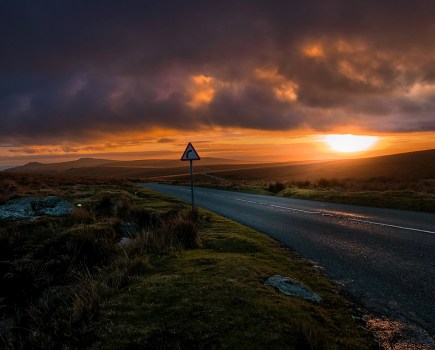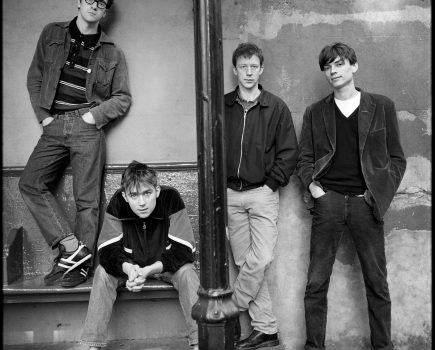Recently celebrating 35 years in the business, Andy Gotts MBE is a unique and innovative celebrity portrait photographer who’s always walked his own path. The title of his most recent portrait collection, The Photograph, is telling, as he favours a direct, stripped-back approach that prizes the authenticity of the captured moment over glamour and sycophancy – however distinguished his celebrity subject. He works alone and keeps things simple, capturing his subjects as they are.
The pantheon of famous actors and musicians in The Photograph like his approach too, from Paul Newman to Lily James, from Bryan Ferry to Motorhead. Andy dropped by our stand at The Photography Show for a chat, so we were keen to do a more in-depth interview.
Twist of fate
While some of his celebrity sitters have reputations as divas, Andy is the exact opposite – he’s generous with his time and bursting with hard-won insights. ‘I got started as a celebrity portrait photographer entirely by chance,’ he recalls. ‘In 1990 I was doing a course in design and photography at Norfolk College of Art and Technology. By year two, I was close to giving up, as there was nothing I really wanted to get my teeth into in terms of photography. By a twist of fate, Stephen Fry came to the college one day to hand out diplomas. He was already a big star, and I knew the room next door to where he was speaking was going to be empty. So, I set up my camera and backdrop next door and asked him if I could take his portrait.’
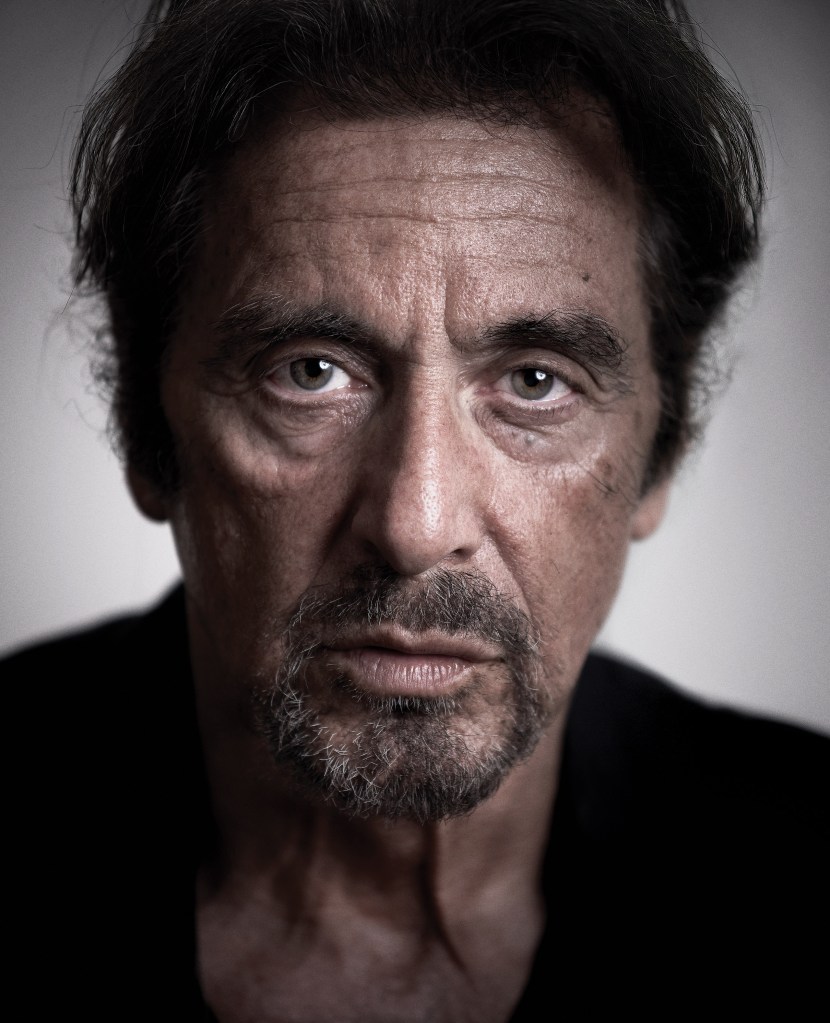
90 seconds changed my life
‘He rolled his eyes but agreed, and much to my surprise, immediately followed me into the room. I took ten photos in 90 seconds, quickly developed the film and it changed my life forever. Stephen loved the images – one in particular, as a chance shadow had concealed a break in his nose – and displayed it at home. His friend, the actor Kenneth Branagh, saw the portrait, also loved it, and called up to see if I’d also like to photograph him and his wife Emma Thompson in north London. That’s how it started.’
You’d think the young Andy would be starstruck, terrified, or both, but as he recalls, everything happened too quickly for him to overthink things. ‘Whoever I went on to shoot, be it Rod Steiger, Paul Newman or Lauren Bacall, I was never starstruck, just excited. I’d have been more concerned if somebody who wasn’t famous asked me to photograph them, as I wouldn’t know where to start!’
Finding his style
While Andy got off to a strong start, building a portfolio of actor portraits, he had to be resilient. ‘When trying to earn a crust as a photographer around 1993, I’d turn up at the offices of famous magazines in London, hoping for commissions. I remember Esquire once looked at my portfolio and said “this work is just like David Bailey’s.” I was like, thanks very much! They were like “no, it’s not a compliment. If we wanted David Bailey, we’d (expletive) hire David Bailey!” At the time it felt like a slap in the face but I saw their point. I had to develop my own style, not mimic other famous photographers.’
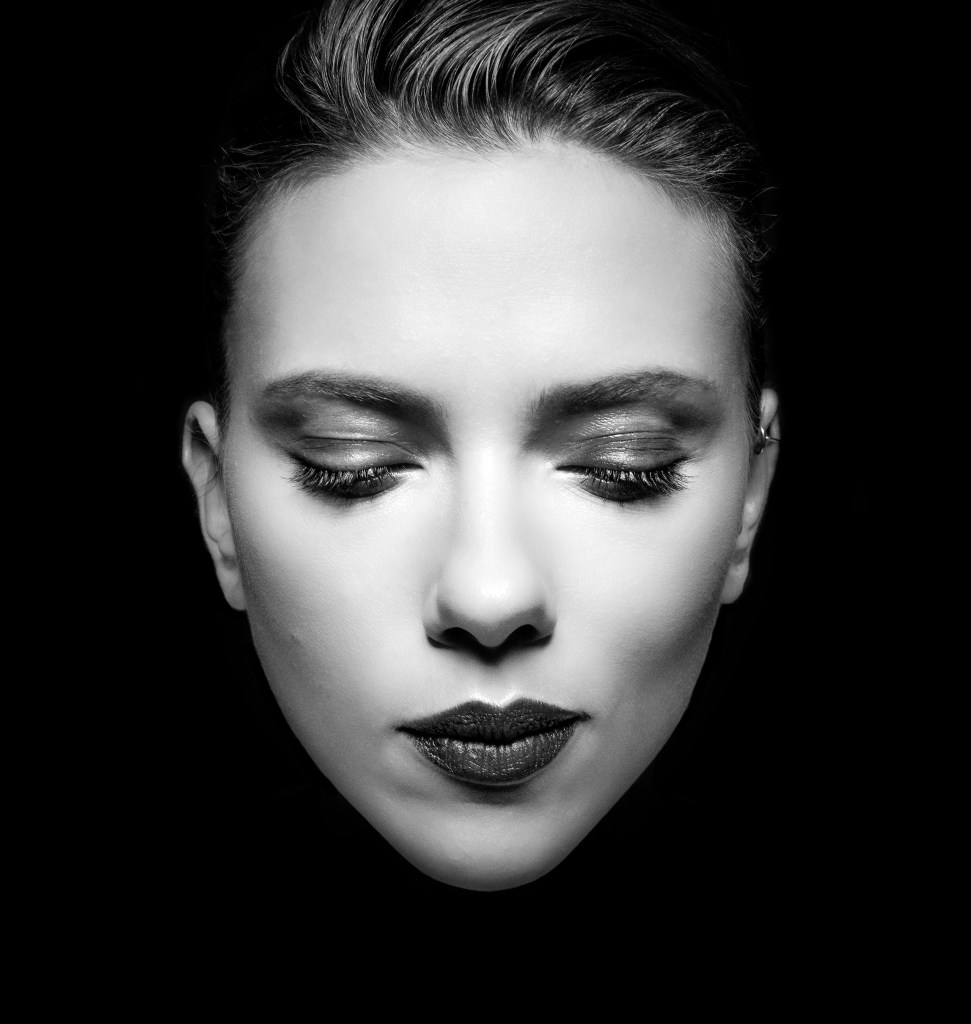
Classic movies
So rather than get discouraged, Andy drew on his deep love of movies, as well as great artists such as Caravaggio. ‘I love the old portrait guys, Penn, Avedon, Karsch, but I mainly took my inspiration from film directors. I love classic movies by David Lean, Hitchcock, Fritz Lang. I studied how they lit the characters, and also drew inspiration from a wide range of other influences beyond stills photography. I specialise in gritty, realistic portraits with minimal editing, and my work has become instantly recognisable – which is not something you can say about a lot of other celebrity photographers.’
A unique way of working
As well as a different approach to portraiture, Andy came up with a new way of working with celebrities. ‘My work model is unique. Imagine you are a famous actor. You come to me asking for portraits that are also unique – they are yours, not commissioned by some magazine. So, when the media next comes to you asking for an interview and photo shoot, you can turn around and say “how about we do the interview via Zoom – and by the way, I already have a selection of previously unseen shots of me, taken by Andy Gotts.” In other words, the “talent” comes to me directly.’
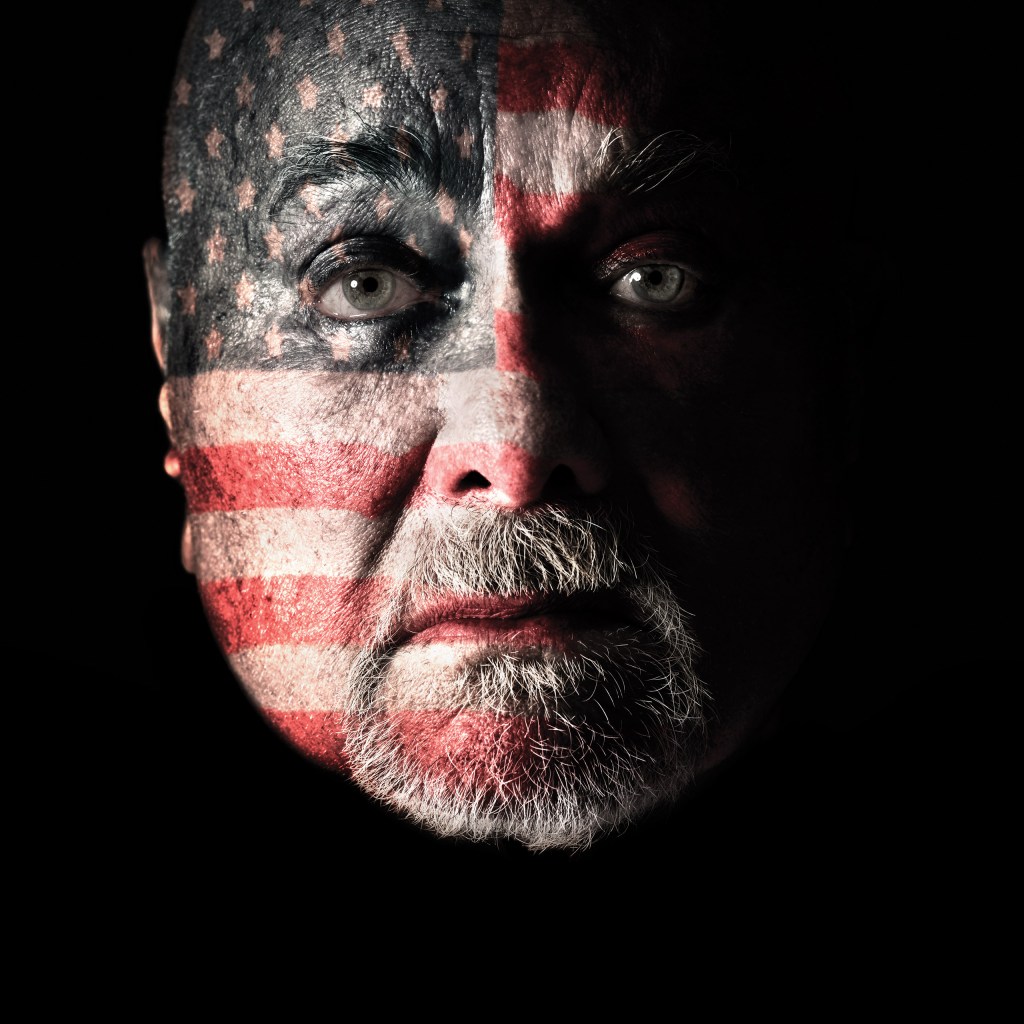
Fast work
This frees Andy to work as he wants, without some movie or music star’s flunkies hassling him to hurry up during a promotional shoot. ‘I never photograph people when they are working or promoting something. I don’t do commissions for magazines either. Essentially, I shoot for me, not to keep other people happy. So if anything, I have too much time with my subjects, but it’s not a problem as I get bored easily and work quickly. Even when I had to take pictures of celebrities during promotional “junkets” in the early days, I learned to work fast and this has stuck with me.’
One shot, one life
Andy’s favourite example of this came when he was working with Paul Newman, which also explains how he got the nickname ‘One Shot Gotts.’ ‘Paul flew me over to Connecticut to do some portraits over a couple of days. I knew exactly what I wanted and got everything set up. So Paul gets ready for a long session, and I am like, “thanks Mr Newman but we’ll be done in ten minutes.” He slammed his hands down on the table and yelled, “listen, I’ve been photographed by the best. I know it’s at least two hours, so don’t con me!”
‘At the time I was shooting Polaroid film, and when I showed him the results after five minutes or so, he was like “son, that is impossible! You really are ‘One Shot Gotts’.” I’ve kept that nickname ever since!’
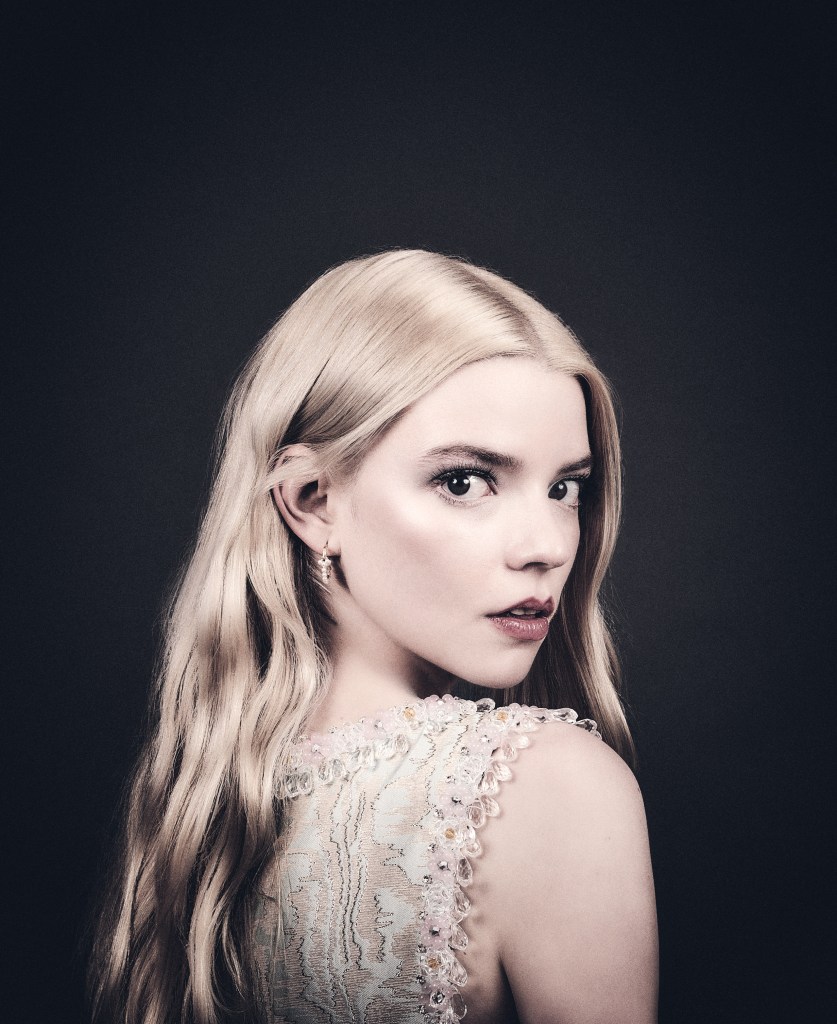
Playing catch-up
Andy’s modus operandi also has a big influence on how he works with his celebrity sitters. ‘Because I am a movie buff and my subjects know how my career has developed, I treat them as if I know them. I have no assistants, just me and the camera, and no hair or makeup people. So the celebrities are almost playing catch-up, not sure about what to expect. George Clooney, for example, has been photographed thousands of times, so my challenge is to try to do something he has never done before in a portrait session. I treat them like I know them, and avoid obvious, predictable questions. I ask them about their family, their hobbies and so on. My job is to capture a moment in time, not to interview them.’
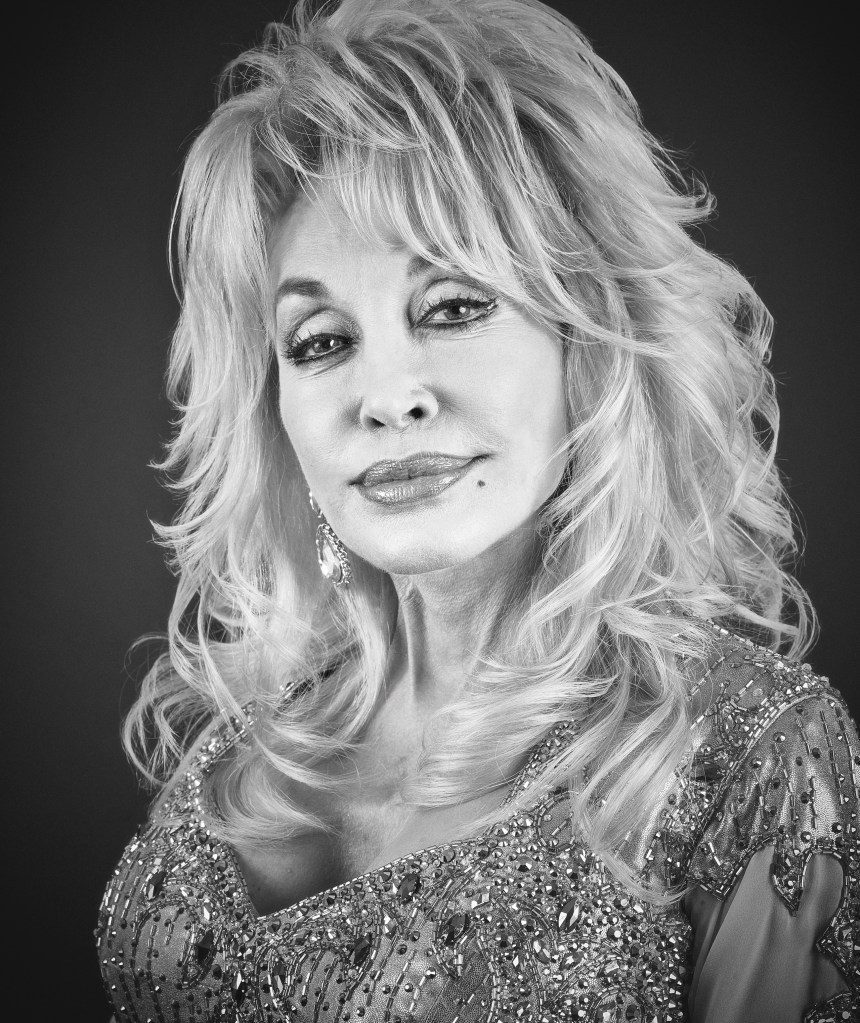
Quirky
‘I spend at least 30 minutes just chatting, which gives my subjects time to see what sort of guy I am and it gives me time to see what kind of mood they are in. There’s no point asking somebody for a quirky shot if they are pissed-off or sombre. I then move the conversation in front of the camera, and start taking pictures – chat, click, chat, chat, click. I see my photo shoot as a conversation interrupted by taking photos. As I saw with Paul Newman, often my subject can’t believe the shoot is done, as I am not directing them. It’s like Cartier-Bresson and the decisive moment, I “craft” the decisive moment and suddenly capture it. Also, I might slip in a stupid comment, for example, and capture their reaction.’
Relaxed
Looking through the book The Photograph, you’re struck by how many of the subjects are relaxed and having fun, but Andy is adamant that this is entirely spontaneous – he isn’t directing people or asking them to goof around in a contrived way.
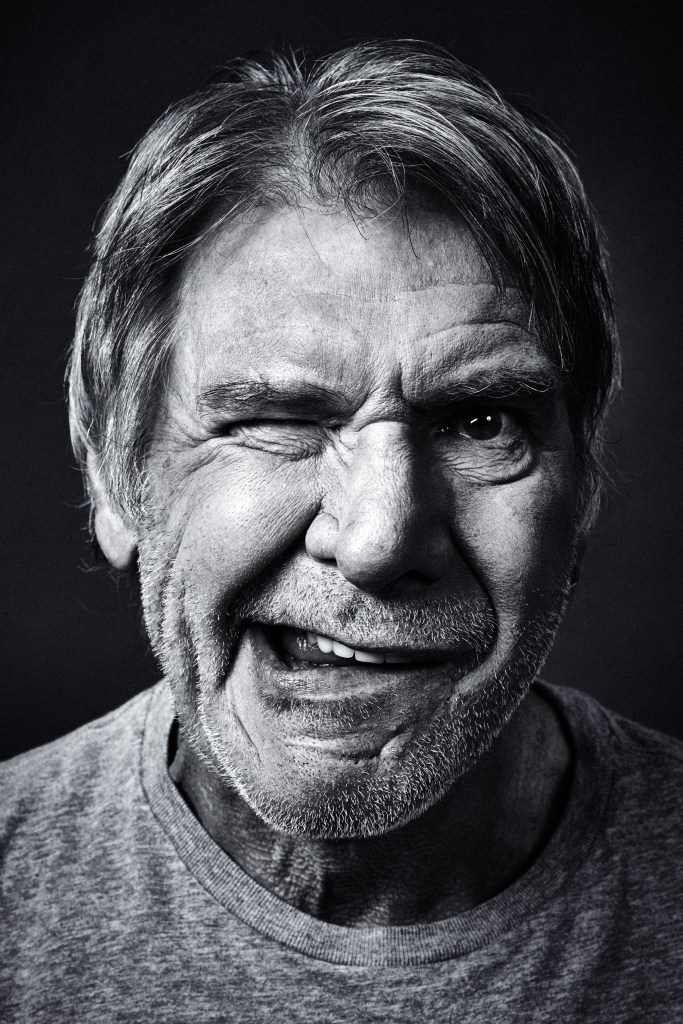
Harrison Ford
‘Another great example is Harrison Ford. When I met Harrison, I asked why people were scared of him. He explained it was because he got so bored of journalists and photographers asking the same old questions about Star Wars when he’d done lots of other movies. “You haven’t asked me about Star Wars once, you asked me about aircraft and World War II and it’s been a pleasure spending time with you,” he said. Harrison added that there were no pictures of him pulling silly faces, as no photographer had ever asked him before as they were all intimidated. So then he started pulling silly faces…’
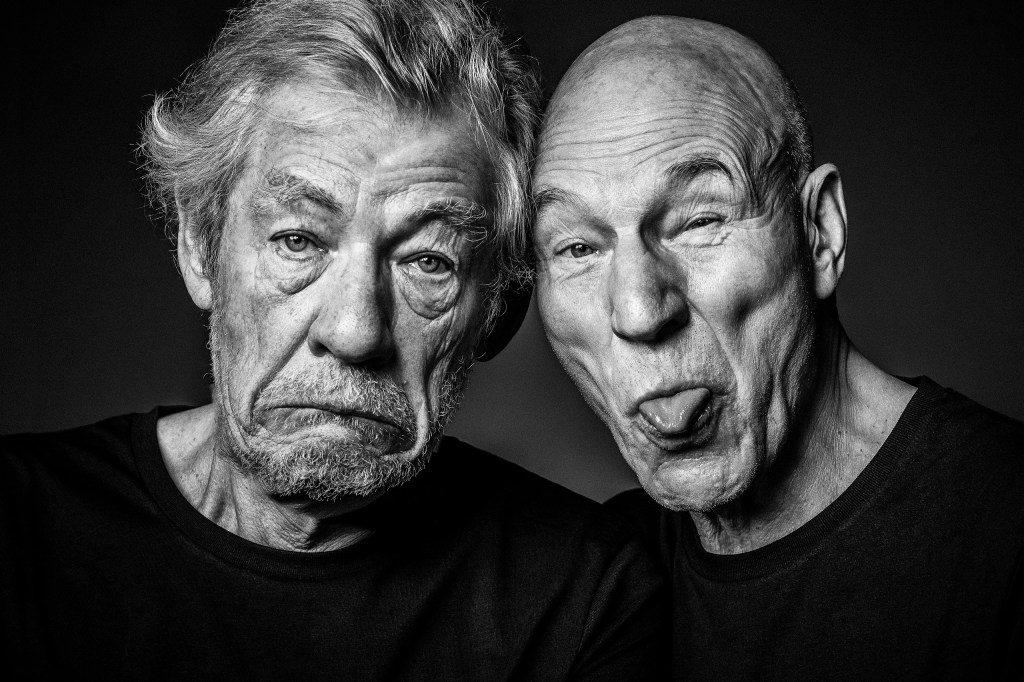
Keeping it real with Brad Pitt
While Andy is far from reaching the end of his career, he hopes to be remembered as a photographer who captured an authentic moment in the lives of his subjects, exactly as they are at that moment. By coincidence, Andy once ended up photographing Brad Pitt in the same studio as Annie Leibovitz and her large entourage, using the same lighting – but his approach was very different. ‘Brad commented that while Annie’s pictures for Vanity Fair magazine were flawless, he looked like he did ten years ago. In contrast, I’d captured all the lines in his face, and that he was perfectly happy with how he looked now.’
Lauren Bacall
A similar, more touching celebrity anecdote concerns the Hollywood icon Lauren Bacall. ‘Lauren was 88 at the time. I did a test shot with her looking blankly at the camera and then we did more shots where there was more “Lauren Bacall.” She liked the test shots the most. ‘Andy you can see every single line in my face – Humphrey Bogart gave me these crow’s feet, Katharine Hepburn gave me those jowls.’
‘I think this is why people love my work, I capture lived-in faces and the truth of the moment. The younger actor Andrew Scott was crying in our shoot, for example; I wonder where his brain was to be able to conjure up that moment of heartbreak.’
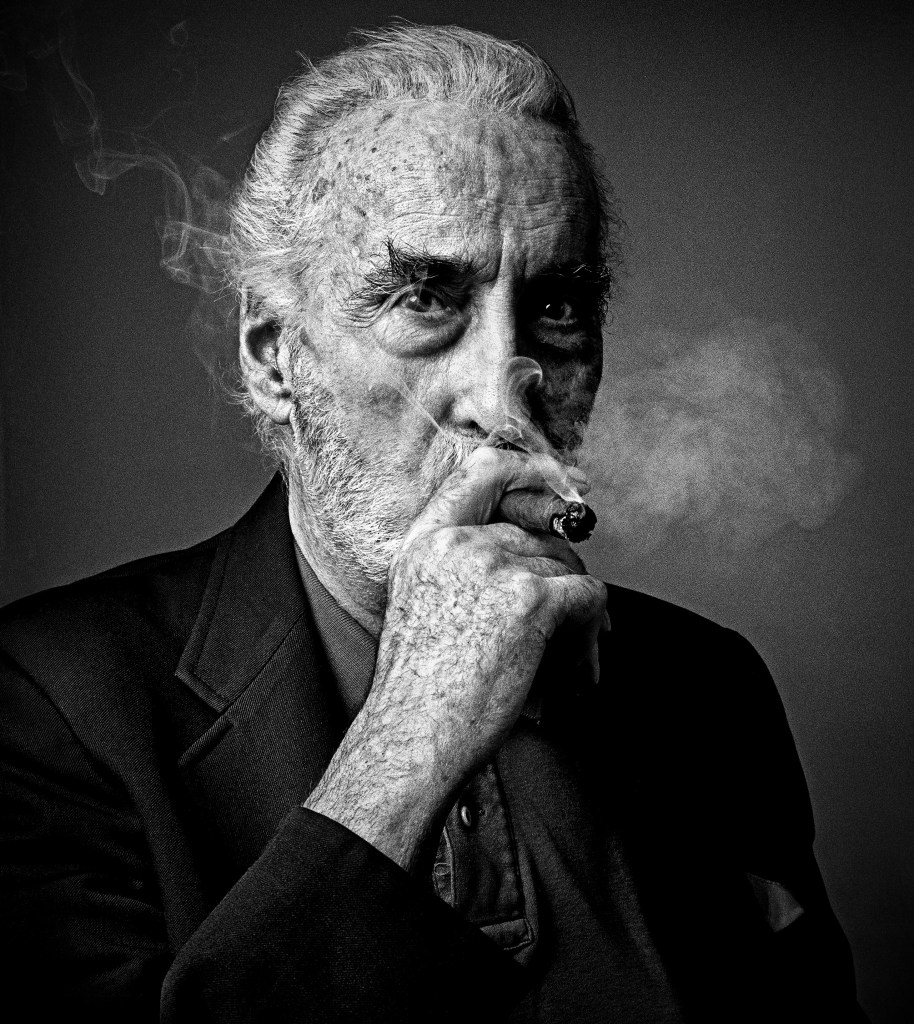
Christopher Lee and tea
Andy wouldn’t have survived so long as a celebrity portrait photographer without being tactful and sensitive to his subjects’ wishes, while still doing his best to get beyond their carefully cultivated public persona in his shoots. As he wryly notes, ‘If you piss off an actor, every other actor will know about it. They all talk to each other, as if there is some massive What’sApp group. I explain to my subjects that nobody else will see the pictures until they’ve told me the ones they don’t like. I did some shots of Christopher Lee on 120 film, for example, and halfway through he stopped to have tea and smoke a cigar. I kept on shooting.
‘When he saw the ones of him smoking, he didn’t want anyone else to see them, and I promised that would be the case. When he died, The Times contacted me looking for previously unpublished pictures, so I asked his widow, Lady Lee, if it was okay to release the cigar shots and she said, “oh no, you misunderstood, he just didn’t want anyone else to see them as he loved them so much!” I would never go behind anyone’s back.’
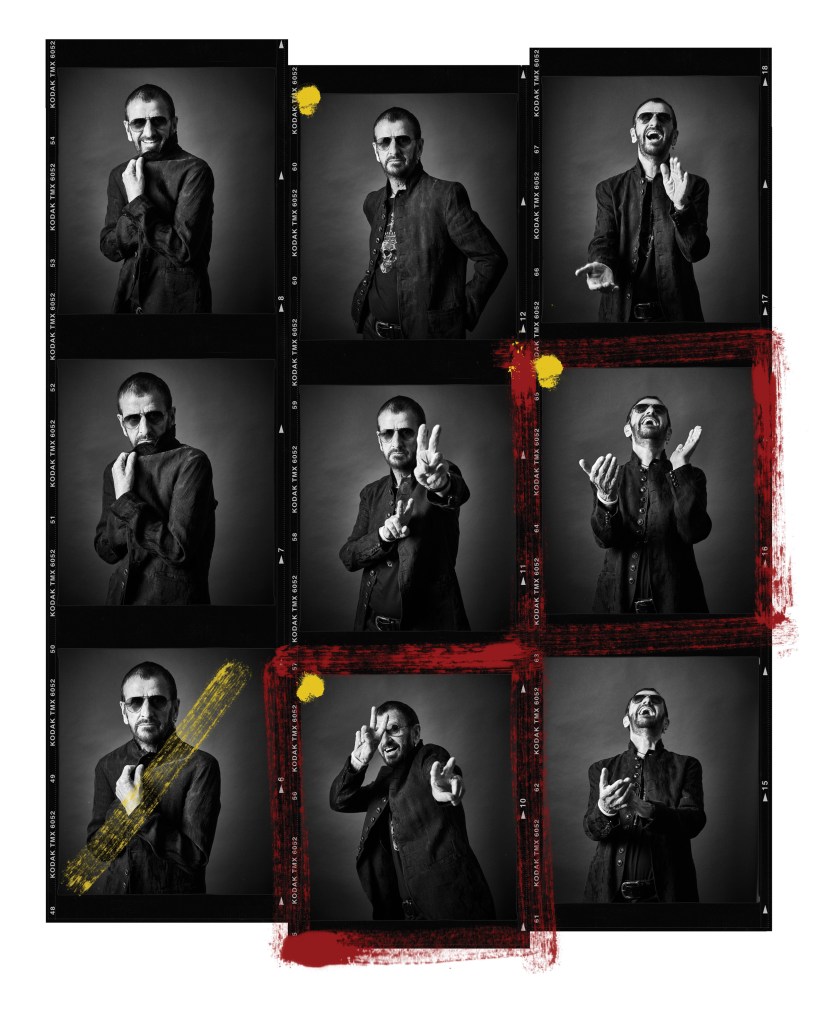
Ringo and the Ansel Adams of faces
Moving on to Andy’s technical approach, he shares some fascinating insights when discussing his judicious use of backdrops. ‘While Lord Snowdon favoured quite complicated backdrops, I like to keep my backdrops simple and undistracting, in order to focus the viewer’s attention on the face. I want to capture every nook and cranny. Ringo Starr told me I was the Ansel Adams of faces, capturing the “landscape” of a human face – I was delighted that Ringo appreciated that, and I want this quote on my tombstone!’
Muted
Andy has also thought carefully about why’s he drawn to shooting in black & white, or keeping the hues very muted in his colour portraits. ‘For the first 19 years of my career I only shot black & white film on a Mamiya RB67 I bought when I was 18. I later read some psychological research and discovered that there are two parts of the brain, the literal side and the creative side. When we look at a black & white image rather than a colour one, your brain has to work harder for a split second to make sense of what you are seeing, and you look at it longer. I thought, well, in a world of colour celebrity shooters, people will spend longer looking at my black & white portraits.’
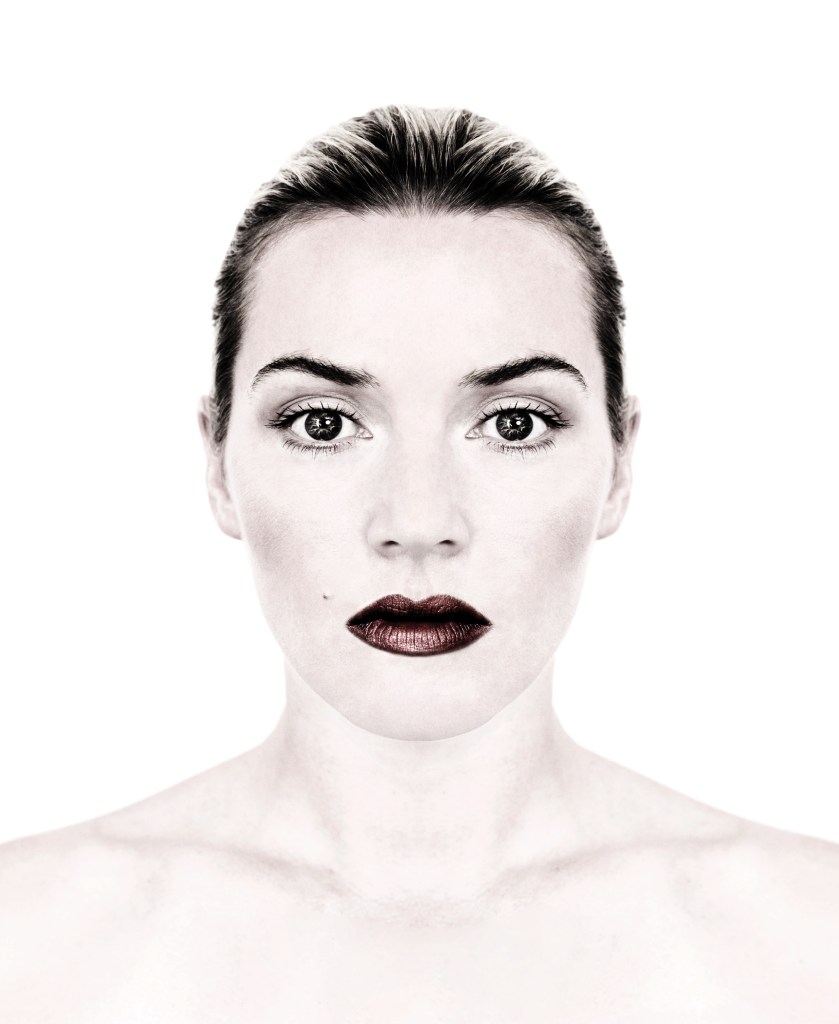
‘I also like contrasty images, with lots of “chiaroscuro” light and shade, and it just wouldn’t look right with too much colour. Everything looks more natural in black or white, or with muted colours.’
Related to this, Andy does minimal post-shoot editing. ‘I only use Photoshop to convert digital images to monochrome, desaturate colours or lighten or darken backdrops. I never manipulate faces or remove “flaws” as that’s not my style. Also I prefer to crop in camera, rather than using the Crop tool.’
It’s important to make contact
While Andy does shoot digitally, he remains at heart a passionate film photographer. Indeed, The Photograph is also a love letter to the contact sheet (the outer back cover shows a contact sheet of Kate Moss, for example). ‘I am dismayed that a lot of students I meet only shoot digitally and don’t have access to a darkroom. I feel sorry for photographers who don’t experience the passion of working in a darkroom and seeing a contact sheet. Indeed, a big reason for doing The Photograph was to show the art of the contact sheet. Yes, it’s a functional part of photography as you use it to review and select images, but a contact sheet can be a beautiful piece of photographic art in its own right.’
Wait for the results
Andy also believes the whole digital revolution has led to photographers overshooting for the sake of it, rather than taking their time with each frame. It’s made portrait sitters more impatient. ‘If I am shooting digitally, I actually turn off the image review on the back of the camera. My subjects can wait to see the results, as with film.’
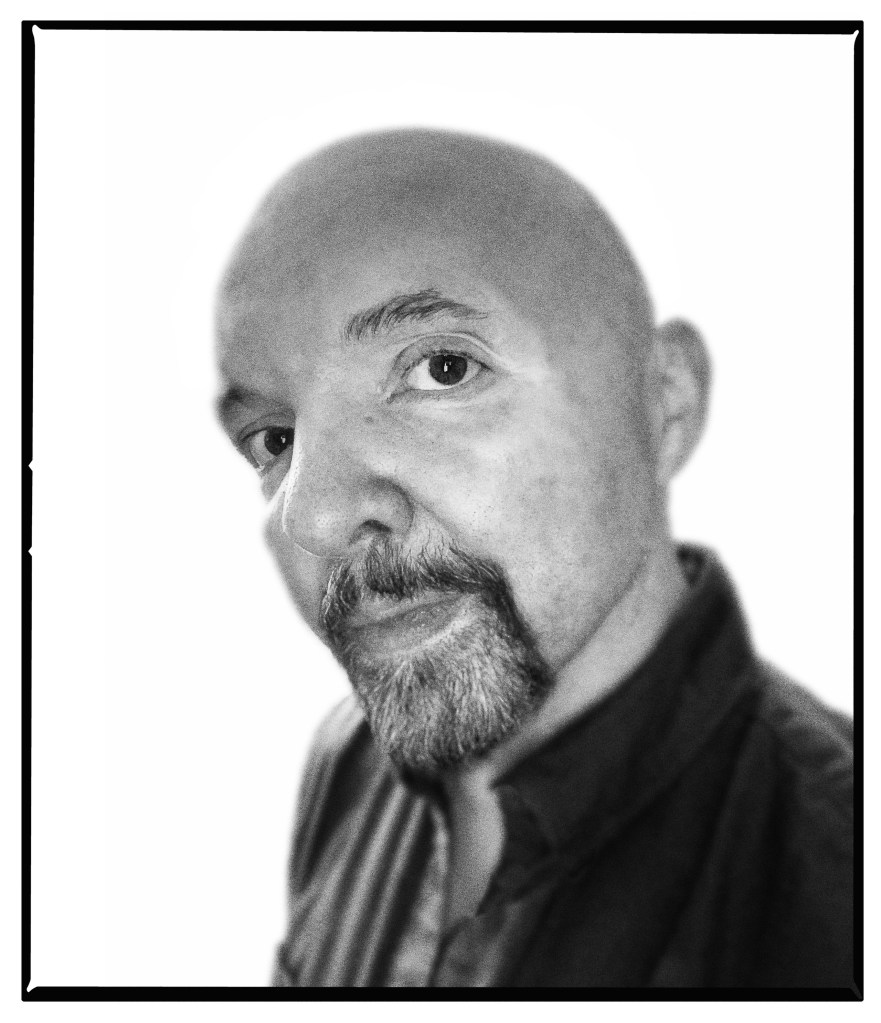
What kit does Andy use?
While Andy continues to shoot with his trusty Mamiya RB67 he also uses a Phase One with a digital back, particularly favouring an 80mm lens for its sharpness and tendency to slightly distort his sitter’s head, revealing pore-deep detail. For lighting, Andy has long favoured Elinchrom flashes. ‘I usually have three or four flashes going, due to the fact I won’t be editing. I like to ‘flash’ at different levels of power, as this acts as a fill, and is kinder on the shadow details.’
Advice from Andy
It’s been 35 years since Andy’s fateful shoot with Stephen Fry, so what advice does he have for younger photographers wanting to follow in his footsteps? ‘The world of celebrity portraiture has totally changed, but my advice to anyone is just to be themselves. As my meeting with Esquire magazine showed, you can’t mimic anyone else.’
‘Also, you need to be as thick-skinned as a rhino and very patient. For at least two years when you are starting out, nobody will care. But hang in there and believe in yourself. The best advice I ever heard came from Rocky Balbao. “It’s not how hard you hit, it’s how hard you take a hit and still go forward.” You will be bashed around and doubt yourself but if you have self-belief, take every “no” on the chin and keep moving forward. One day you will achieve it.’
The god-like genius of Andy Gotts
Based in London and New York, Andy Gotts’ work is held in the permanent collection of the National Portrait Gallery, and his awards include an MBE in 2012 for his contribution to photography and charity. Over 35 years, his charitable contributions have totalled more than £79 million. This February, he made $1.6 million in one evening for Aerosmith singer Steven Tyler’s ‘Janie’s Fund’ for abused girls.
A new edition of Andy’s latest portrait collection, The Photograph, is available now. For more, see www.andygotts.com and @DrGotts on Instagram

